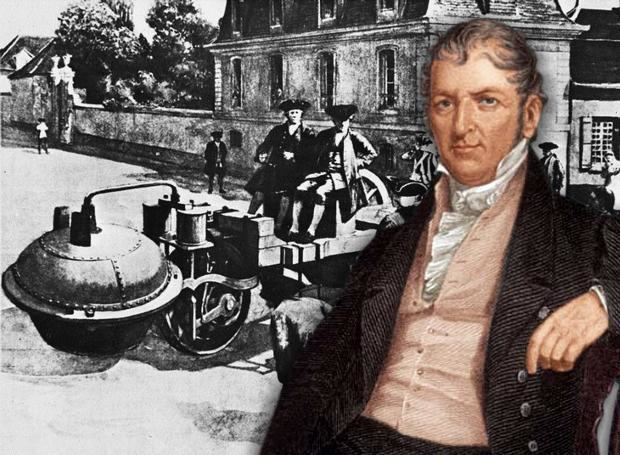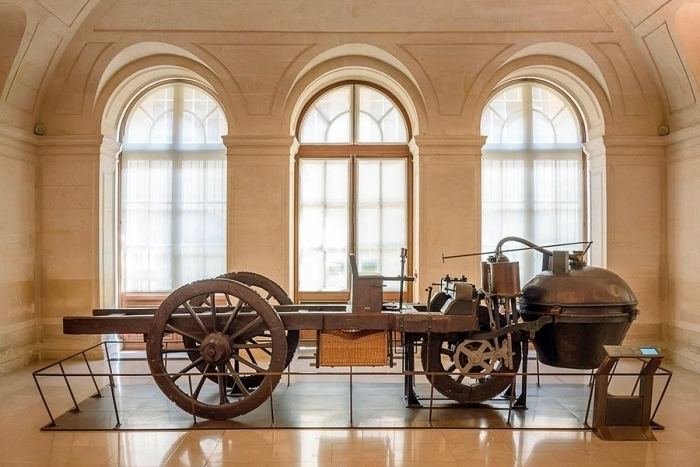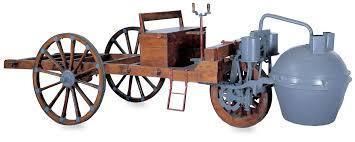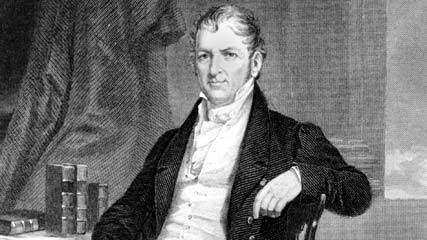Nationality French Role Inventor Name Nicolas-Joseph Cugnot | Children 2 children | |
 | ||
Significant projects fardier a vapeur Died 2 October 1804 (aged 79) Paris, France | ||
Le Fardier de Nicolas Joseph Cugnot - Version 2 - 4K - Retromobile 2011 - Paris
Nicolas-Joseph Cugnot (26 February 1725 – 2 October 1804) was a French inventor who built the first working self-propelled land-based mechanical vehicle, the world's first automobile.
Contents
- Le Fardier de Nicolas Joseph Cugnot Version 2 4K Retromobile 2011 Paris
- Background
- The first self propelled vehicle
- Later life
- Dispute
- References

Background

Cugnot was born in Void-Vacon, Lorraine, (now departement of Meuse), France. He trained as a military engineer. In 1765 he began experimenting with working models of steam-engine-powered vehicles for the French Army, intended for transporting cannons.
The first self-propelled vehicle

French Army Captain Cugnot was one of the first to successfully employ a device for converting the reciprocating motion of a steam piston into a rotary motion by means of a ratchet arrangement. A small version of his three-wheeled fardier à vapeur ("steam dray") was made and used in 1769 (a fardier was a massively built two-wheeled horse-drawn cart for transporting very heavy equipment, such as cannon barrels).

In 1770, a full-size version of the fardier à vapeur was built, specified to be able to carry four tons and cover two lieues (7.8 km or 4.8 miles) in one hour, a performance it never achieved in practice. The vehicle weighed about 2.5 tonnes tare, and had two wheels at the rear and one in the front where the horses would normally have been. The front wheel supported a steam boiler and driving mechanism. The power unit was articulated to the "trailer", and was steered from there by means of a double handle arrangement. One source states that it seated four passengers and moved at a speed of 2.25 miles per hour (3.6 km/h).
The vehicle was reported to have been very unstable due to poor weight distribution. This would have been a serious disadvantage since the fardier was intended to be able to traverse rough terrain and climb steep hills. In 1771 the second vehicle is said to have gone out of control and knocked down part of the Arsenal walls, reported to be the first known automobile accident. However, according to Georges Ageon, the earliest mention of this occurrence was thirty years later, in 1801, and it does not feature in contemporary accounts. In addition to the weight distribution problem, boiler performance was also particularly poor, even by the standards of the day. The vehicle's fire needed to be relit, and its steam raised again, every quarter of an hour or so, which considerably reduced its overall speed and distance.
After running a small number of trials, variously described as being between Paris and Vincennes and at Meudon, the project was abandoned. This ended the French Army's first experiment with mechanical vehicles. Even so, in 1772, King Louis XV granted Cugnot a pension of 600 livres a year for his innovative work, and the experiment was judged interesting enough for the fardier to be kept at the Arsenal. In 1800 it was transferred to the Conservatoire National des Arts et Métiers, where it can still be seen today.
241 years later, in 2010, a copy of the "fardier de Cugnot" was built by pupils at the Arts et Métiers ParisTech, a French Grande école, and the city of Void-Vacon. This replica worked perfectly, proving that the concept was viable and verifying the truth and results of the 1769 tests.
This replica was exhibited at the 2010 Paris Motor Show. It is now exhibited by a local organization in the native village of Cugnot, at Void-Vacon, Meuse.
Later life
With the French Revolution, Cugnot's pension was withdrawn in 1789, and the inventor went into exile in Brussels, where he lived in poverty. Shortly before his death he was invited back to France by Napoleon Bonaparte, and eventually returned to Paris, where he died on 2 October 1804.
Dispute
This 1769 claim of earliest self-powered vehicle is disputed by some sources which suggest that around 1672 Ferdinand Verbiest, a member of a Jesuit mission in China, designed the first "steam-powered vehicle", but that it was too small to carry a driver and may have never been built.
